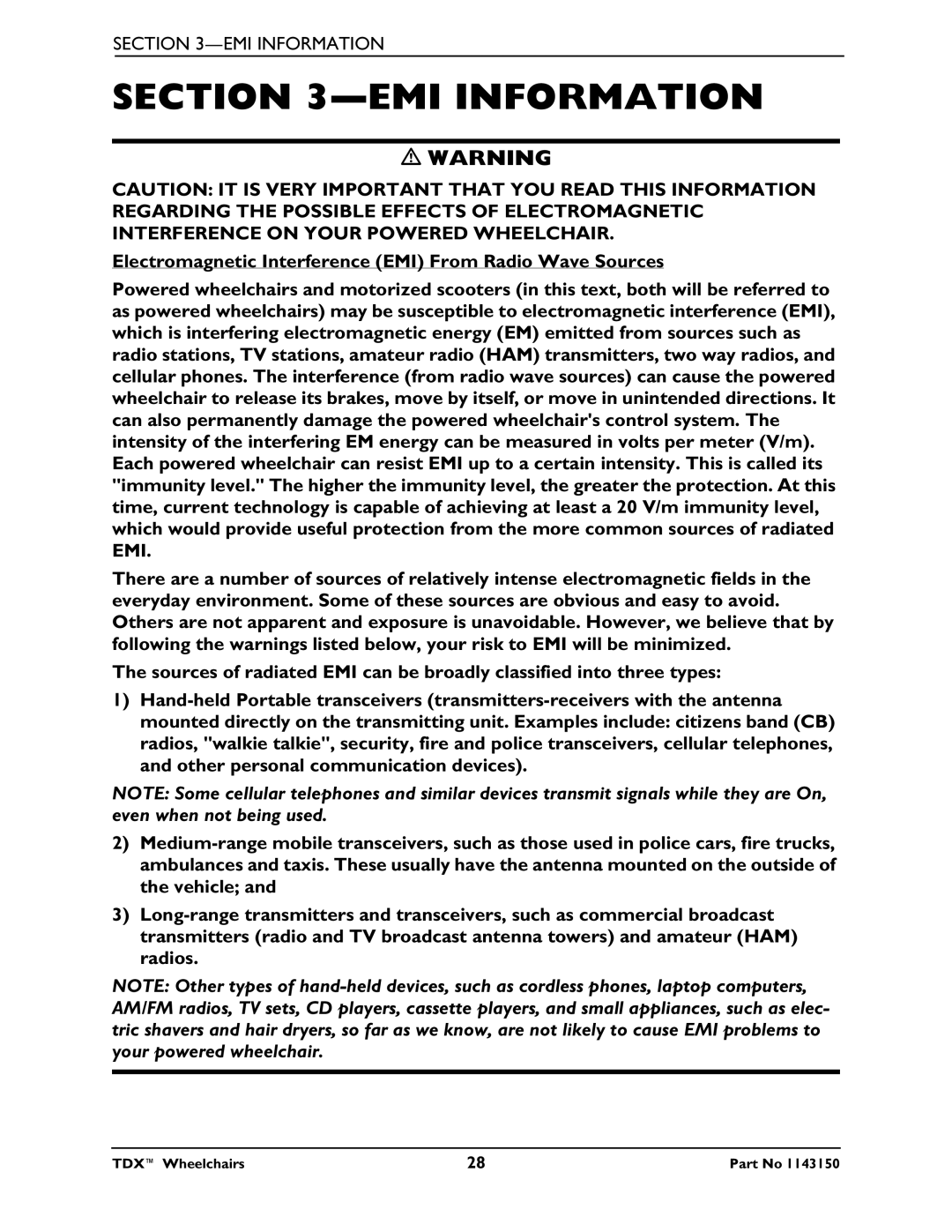TDX 5, TDX 3, TDX 3 SE, TDX 4 specifications
Invacare has established itself as a leading manufacturer of mobility solutions, and its TDX series of power wheelchairs exemplifies the company's commitment to innovation, comfort, and user-centric design. The TDX 4, TDX 3 SE, TDX 3, and TDX 5 are prominent models within this series, each equipped with cutting-edge features and technologies that cater to the diverse needs of users.The TDX 4 is designed for superior maneuverability and driving performance. It boasts a unique Mid-Wheel Drive technology, which ensures that the chair can pivot in place with ease, allowing users to navigate tight spaces effortlessly. The TDX 4 is equipped with a highly adjustable seating system and a modular design that allows for customization based on user preferences and needs. With an active anti-tip system, the TDX 4 ensures stability on slopes and uneven terrains, enhancing user safety.
Next in the lineup is the TDX 3 SE, which emphasizes enhanced seating and suspension systems. Users can enjoy a smooth ride thanks to its advanced suspension that absorbs shocks and vibrations. The TDX 3 SE offers flexible seating options, including tilt, recline, and elevating legrests, allowing for optimal positioning and comfort. With a robust driving range, the TDX 3 SE is perfect for individuals looking to explore their surroundings while ensuring adequate support and comfort.
The TDX 3, another noteworthy entry, incorporates many of the features found in its siblings but is tailored for those who need a more straightforward approach. This model is lightweight yet durable, making it easy to transport and manage. With a focus on reliability and ease of use, the TDX 3 is an excellent choice for individuals who prioritize practicality without compromising on quality.
Finally, the TDX 5 stands out with its advanced technological integration. It features smart technology that allows for intuitive control and customization. The control systems are designed to be user-friendly, accommodating those with varying levels of dexterity. Advanced battery technology ensures long-lasting performance, while the ergonomic design promotes comfort during extended use.
In conclusion, the Invacare TDX series—including the TDX 4, TDX 3 SE, TDX 3, and TDX 5—offers a range of features that cater to different mobility needs. With their focus on maneuverability, comfort, and technological innovation, these power wheelchairs empower users to regain independence and enjoy a more active lifestyle.

